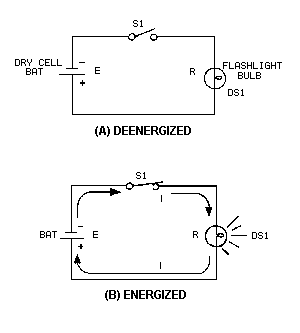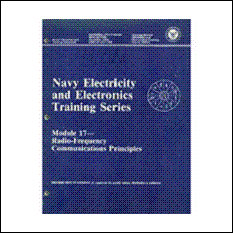DC Current
DC current (DC) is the unidirectional flow of electric charge.
Direct current is produced by such sources as batteries, thermocouples, and solar cells. Direct current may flow in a conductor such as a wire, but can also be through semiconductors, insulators, or even through a vacuum as in electron or ion beams.
The electric charge flows in a constant direction, distinguishing it from alternating current AC (to be explained in another tutorial). A term formerly used for direct current was galvanic current.
A flashlight or similar device is a good example of direct current being utilized to power a device.
The schematic shown is an illustration of how dc current flows in a circuit. The dc current flows out of the load (battery), goes through the controlling switch to the load or (light bulb), and then returns back to the source. (The positive side of the battery).

A basic direct current circuit schematic.
Direct current may be obtained from an alternating current supply by use of a current-switching arrangement called a rectifier, which contains electronic elements (usually) or electromechanical elements (historically) that allow current to flow only in one direction. Direct current may be made into alternating current with an inverter or a motor-generator set.
The first commercial electric power transmission (developed by Thomas Edison in the late nineteenth century) used direct current. Because of significant historical advantages of alternating current over direct current in transforming and transmission, electric power distribution was nearly all alternating current until a few years ago. In the mid 1950s, HVDC transmission was developed, which is now replacing the older high voltage alternating current systems.
For applications requiring direct current, such as third rail power systems, alternating current is distributed to a substation, which utilizes a rectifier to convert the power to direct current.
Direct current is used to charge batteries, and in nearly all electronic systems as the power supply. Very large quantities of direct-current power are used in production of aluminum and other electrochemical processes. Direct current is used for some railway propulsion, especially in urban areas.
High-voltage direct current is used to transmit
large amounts of power from remote generation sites or to interconnect
alternating current power grids.
How Ohm's Law applies to a DC Current
Application of Ohm's Law in a simple dc circuit.
Graphical analysis of the basic circuit
Series DC Circuits and characteristics
Series circuit DC current and voltage
Series circuit analysis
Computing series circuits
Kirchhoffs voltage law and the polarity of voltage
Kirchhoffs Voltage Law Application
Series Aiding and Opposing Sources
Circuit terms and characteristics
Shorted and open circuit conditions.
Source Resistance
Parallel-dc-circuits and characteristics
Parallel circuit voltage in a dc circuit
Parallel circuit current in a dc circuit















